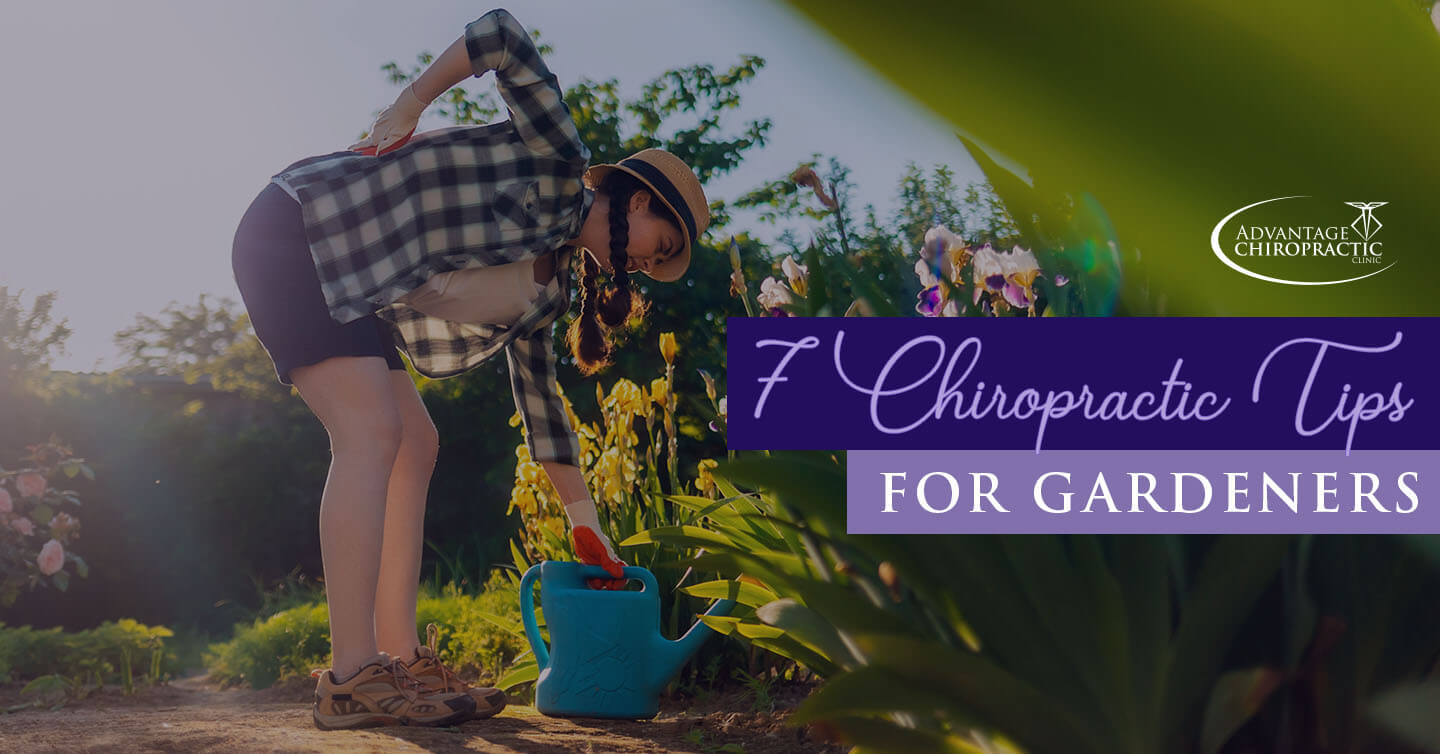
With the arrival of summer, a lot of us are back out doing our favorite outdoor activities. This includes summer gardening! But before digging in this month, check out these seven chiropractic tips for gardeners.
Warm up before you start.
Gardening can be a physically enduring task, so warming up your muscles is necessary. Try going for a quick walk or doing some light stretching before spending your time in the garden.
Lift with support.
Along with pretty flowers and tasty veggies, gardening also comes with physical demands such as lifting heavy pots, bushes, bags, soil and more. Remember to lift with your legs, not your back.
Begin by squatting—not bending at the waist—and use both hands to hold the object and keep it close to your body. From there, slowly straighten your legs as you stand.
Without the proper support or using the right technique, you can injure your back muscles and ligaments.
Take breaks.
As easy as it is to spend your day in the sun plating your desired seeds, many gardeners complain about aches and pains afterward. Be sure to take frequent breaks, allowing your muscles and joints to rest.
Use cushioned knee pads.
One of the most popular chiropractic tips for gardeners is to use cushioned knee pads. This helps add comfort and avoid pain when kneeling at ground level.
You can find both wearable and moveable kneepads, whichever you prefer.
Find support with kneelers and chairs.
Want to avoid aches from repeatedly getting on the ground and standing back up? Find support by using a kneeler or a chair.
Kneelers, certainly those that are raised with padded handles, can help you get up and down easily by using your arm strength. These typically include a cushioned base as well to relieve the impact on your knees and back.
Use the right tools.
Try switching to tools with better grips and cushioning, for instance. Additionally, make sure all your tools are the right size for you to avoid additional muscle strain.
Avoid bending.
It is natural to want to bend when doing something at a lower level. However, try to kneel instead. Again, use a kneeler or chair, or even bring the garden closer to you with a raised garden bed!
A typical raised garden bed is two to three feet high and offers a variety of planting options. With some beds, there is even an edge that lets the gardener sit while planting. Plus, raised garden beds are wheelchair-accessible!
Summary
Now that you know these seven chiropractic tips for gardeners, are you ready to take on this season’s garden? Be sure to implement these pointers and continue reading our blogs for more chiropractic care news.

